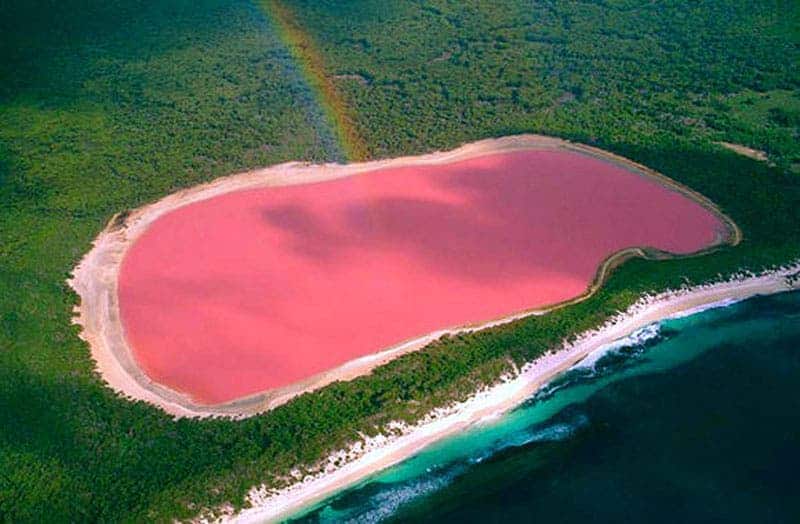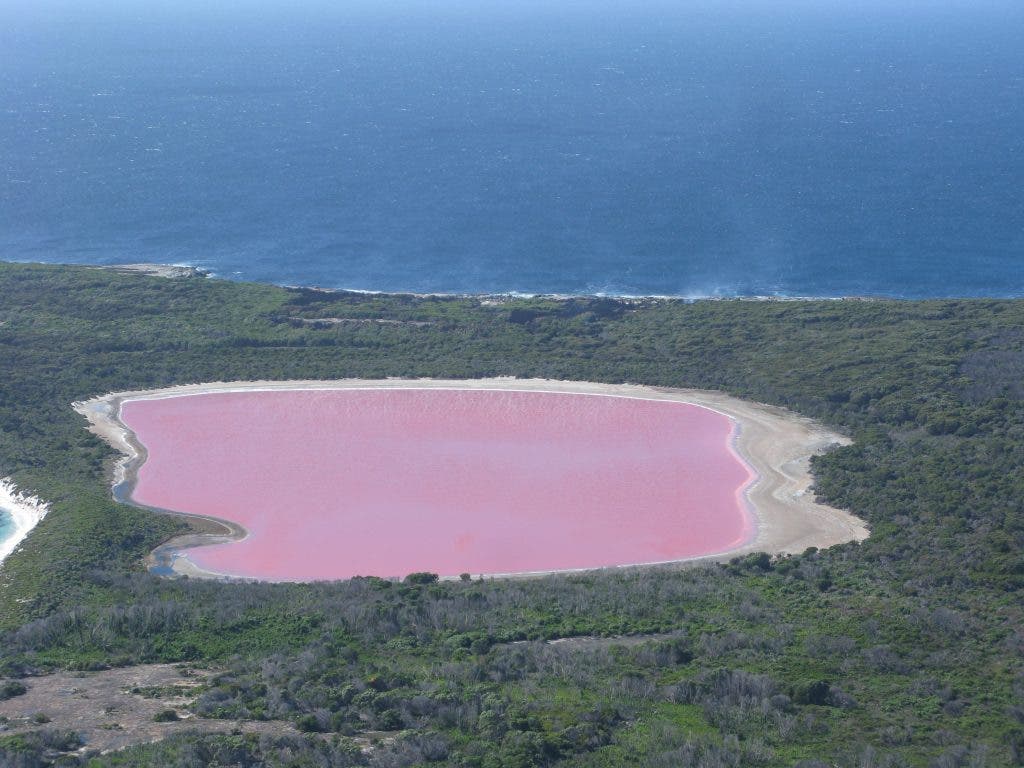There are many bizarre things in Australia, but few go even close to the pink lake Hillier.

Lake Hillier is a pink-coloured lake on Middle Island in Western Australia – the largest island from the Recherche Archipelago, a group of about 105 islands. A narrow strip of land composed of sand dunes covered by vegetation separates it from the ocean.

The tiny lake only spans 600 meters wide, but the pink color is just unmistakable – and downright weird. What you’re seeing around it is a ime of white salt and a dense woodland of Paperbark and Eucalypt trees. The first reported sighting dates back to the journals of Matthew Flinders, a British navigator and hydrologist in 1802.
But here’s the kicker: nobody knows exactly why it’s pink! The flamboyant rose pink color does not alter when you take the water and put it into a container, and many biologists believe this is all caused by a combination of low nutrient concentrations and bacteria (Dunaliella salina & Halobacterium, to be more precise).






